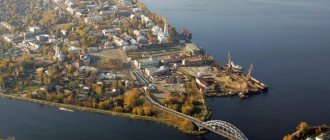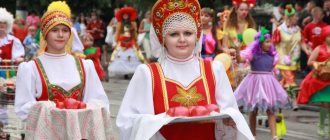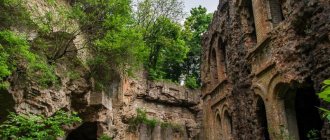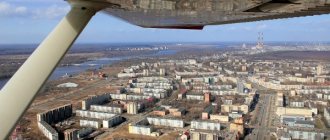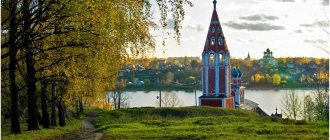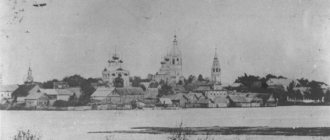General information and history of the area
Today, the Resort District of St. Petersburg consists of satellite cities connected to St. Petersburg by convenient, albeit congested highways, elite dachas, country clubs and restaurants. There is expensive land and prestigious villas here; here, back in 1720, folk craftsman Ivan Efimov invented a submarine, which can with full responsibility be called one of the ancestors of modern submarines. Brodsky and Akhmatova, Blok and Faddeev, Ulanova and Kshesinskaya lived here at different times. The Mannerheim Line ran here. We will tell you more about this “suburban” area within the city.
The estate is beautiful
Post-war bunker
Sea shore
Sometimes the Kurortny district today is called the “lungs” of St. Petersburg - here is, so to speak, the largest number of green spaces - among the 27 thousand hectares on which the Kurortny district is located, only 250 hectares are occupied by residential, commercial and administrative development. The resort area is a narrow strip of land 50 kilometers long and 5-10 kilometers wide, stretching along the coast of the Gulf of Finland. This is a peripheral area; in St. Petersburg it borders on the Vyborg and Primorsky districts, as well as the Vsevolozhsky district of the Leningrad region. The area also has a “sea border” with Kronstadt.
Landscape, panorama of the Kurortny district
Before the appearance of St. Petersburg on the banks of the Neva, the territory of the Kurortny district was a swampy, sparsely populated, disputed territory that belonged to Russia, Sweden, and Finland. This left its mark on the development of the area: on the one hand, the constant change of government did not have the best effect on the development of the infrastructure of these places, on the other hand, European diligence and efficient use of territories played a positive role.
Already during the time of the Russian Empire, nobles and rich merchants began to build their country estates here. The place fell in love with St. Petersburg bohemia: good climate, beautiful nature - aristocratic villas and more modest dachas of the burghers and bourgeois appeared in Terijoki and its environs. The October Revolution changed the characters, but not the scenery: party leaders and Soviet officials happily settled in the Kurortny district.
Resort area
Akhmatova House
Everything changed with the beginning of the Finnish, and after it the Great Patriotic War. The resort area took the brunt of the attack; the defense line of Leningrad passed here; from here the Germans who occupied the Northern capital tried to break through further to the north and connect with their friendly Finns. Partisan detachments operated here, people were evacuated here from the besieged besieged Leningrad. Cities and towns were almost completely destroyed, but most of the settlements in the Kurortny district did not surrender to the enemy.
Bunker
Trenches
After the war, the USSR government did everything possible to restore the area. Everything that was possible was rebuilt, new sanatorium-resort establishments appeared, and elite dachas began to be built again. In the late 80s - early 90s, the first cottages of the then “new Russians” began to be built in the Kurortny district. With the exception of high-rise buildings in Sestroretsk and Zelenogorsk, the area has been and remains an area of low-rise and expensive construction. The current boundaries of the Resort District were defined relatively recently: in 1994.
Sanatorium
Mud resort
You can get to the Kurortny district by car along the Primorskoye and Vyborg highways, as well as by train from the Finlyandsky station (Beloostrovskoye direction). 30-40 minutes, and you are surrounded by coniferous forests and the natural beauty of the coastal strip of the Gulf of Finland. The only transport problem in the Resort area is, of course, traffic jams, especially in the warm season, when most city residents try to get out into nature in one way or another. City authorities claim that the construction of the Western High-Speed Diameter (WHSD) and the completion of some road interchanges on the Ring Road will help solve this problem.
Traffic jams
As for the housing stock, as mentioned above, most of the buildings in the Kurortny district are in the private sector. “High-rise buildings” in Sestroretsk and Zelenogorsk are represented by brick post-war houses, Khrushchev five-story buildings, rare “Stalin” buildings and modern economy class houses, including the 611th series. The rest of the housing is private houses: from small houses in gardens to huge expensive mansions in the coastal zone of Repino and Komarovo. Lately, low-rise construction of cottage communities and townhouses of various statuses has also been gaining momentum.
Cottage
Residential complex - townhouses
Real estate prices here are traditionally high. The package of housing and communal services is also not exactly cheap - despite its outlying, almost suburban location, the Kurortny district pays no less for electricity, gas and water than any other district of St. Petersburg: the average bill is about 2,000 rubles.
Entertainment in Zelenogorsk
Zelenogorsk (attractions include numerous and comfortable recreation areas) is rich in places of leisure and entertainment for vacationers:
Dinosaur Park
The city recreation park invites visitors to plunge into prehistoric times and visit the Mesozoic period. An exhibition of life-size moving lizards is an educational and exciting pastime for children and parents. Hidden among the trees and bushes are diplodocus, tyrannosaurus, triceratops, archeopteryx and other dinosaurs.
The park features herbivorous and predatory dinosaurs.
They all move, raise their voices, and look at passers-by. For children, cultural workers conduct quizzes and competitions on their knowledge of the prehistoric world. Children take pictures with dinosaurs and participate in impromptu paleontological excavations.
Zoo
Here you are allowed to feed, pet, and pick up small animals. Each cage has a sign with a list of permitted foods for feeding. The animals are tame and are not afraid of visitors, which brings joy and pleasure to children. Rabbits live freely, in the grass. Sheep, goats and ponies stroll around the zoo. In addition to them, raccoons, horses, peacocks, donkeys and other animals live here.
The green areas of the zoo are equipped with play areas, covered gazebos, and cozy cafes. Zoo workers conduct conversations about the flora and fauna of the region for those interested.
Rope park
A rope park on 2 levels is located on the shore of the Gulf of Finland. The lower level is made for children. The upper level, more complex, is designed for adult vacationers. Both tracks are equipped with an insurance and safety system.
Experienced instructors provide instructions and training before traveling through the levels. The park often hosts sporting events, games, and competitions.
Skate park
A skate park was opened in the city park, next to the children's playground. Its regular visitors are young people and teenagers. The small park is equipped with all the necessary equipment, on which skaters demonstrate their skills and train. These are slides, ramps, slopes, all kinds of obstacles and edges. Admission to the skate park is free.
City fountains
Zelenogorsk (attractions include not only buildings and parks) is famous for its fountains:
| No. | Name | Where is | Short description |
| 1. | Dolphins | Railway station area | Reconstructed in 2013. In the center of the fountain there is a composition of 7 dolphins |
| 2. | Golden bowl | Komsomolsky square near the city park of culture | Began working in the spring of 2004. Made in the form of a golden-colored bowl. |
| 3. | Dandelion | Bank Square | Built in 2010, the structure includes many thin tubes with flowing and dispersing water. The sight is reminiscent of dandelions. |
| 4. | Girl and fish | Center of the square on March 8 | A fountain with a Mongolian girl standing next to her holding a fish. Sculptor - E. Persidskaya. |
| 5. | Fountain | Military memorial near Primorskoye Highway | The fountain is dedicated to the memory of soldiers who died during the Great Patriotic War |
Tree of Happiness
The sculpture in the form of an iron tree was installed in the summer of 2008 at the entrance to the park of culture and recreation. The branches of the tree are lowered to the ground. There are a couple of birds sitting on the top. On the tree trunk is depicted the face of a forest wizard with a long beard going into the ground.
The tree is popular among lovers and newlyweds. Those who seek their happiness also come to him. According to tradition, locks are hung on the branches of the sculpture and secret wishes are made. There are always a lot of people near the tree. People take pictures, communicate, shoot videos.
Golden Beach
A huge area of the beach is located on the northern coast of the Gulf of Finland. It got its name thanks to the clean sand of a golden hue. The coastal bottom is flat and sandy, the entrance to the sea is gentle. This attracts parents with small children. The infrastructure of the holiday destination also contributes to a large number of holidaymakers.
Here are:
- sun loungers;
- cabins;
- children's play area;
- beach volleyball field;
- benches;
- umbrellas;
- cafe;
- boat rental;
- hotel;
- street toilets.
The water on the coast is cool. They swim from the beginning of July until August 20.
Ecology of the area
The Kurortny district has the most favorable environmental situation compared to other administrative entities of St. Petersburg. It is unlikely, of course, that it can be called a full-fledged “lungs” of the metropolis - the area occupies too small an area for this, however, the mild maritime climate, the absence of hazardous industries and many uninhabited areas make the Resort District environmentally friendly and recommended for living.
Forest
It says a lot that it is here that a huge number of different medical institutions are located, including those for the prevention and treatment of cancer, diseases of the respiratory system and the musculoskeletal system. In the area there are several mineral springs and a balneological resort with healing mud. There are also several national parks and reserves under state protection: “Sestroretskoye Swamp”, “Lake Shchuchye”, Gladyshevsky Nature Reserve and many others.
Mineral springs
Among the environmental problems in the area are regular unauthorized garbage dumps and the general frivolous and criminal attitude of residents and guests of the area towards the environment: almost every volunteer raid reveals household and construction waste in the coastal strip and forest areas.
Garbage on the beach
Population of the area
According to the 2010 census, about 70 thousand people live in the Kurortny district: approximately 32 thousand men and 37 thousand women. More than half of the total population live in the city of Sestroretsk.
There is no social homogeneity of the population here: these are very wealthy people who buy expensive country villas in the coastal strip of elite villages belonging to the Kurortny district, and people of average income who live, for example, in Sestroretsk and work at one of its enterprises or same in St. Petersburg.
Most residents of small municipalities are employed in the maintenance of entertainment and recreational facilities. This has been the case since Soviet times, and these people perceive today’s changes in the infrastructure of the region: the construction of low-rise residential complexes, new country restaurants, clubs and recreation centers with enthusiasm, because the appearance of such infrastructure means the emergence of new, well-paid jobs.
Interesting monuments of Zelenogorsk
Zelenogorsk (the sights are located in the central part of the city) is considered a place of original and rare monuments.
Monument to G. Vitsin
The famous and talented G. M. Vitsin was born in small, unremarkable Zelenogorsk. The monument to the actor was opened in the summer of 2008 to mark the city’s anniversary and the 90th anniversary of the birth of the famous fellow countryman.
Zelenogorsk. The best attractions include the monument to G. Vitsin.
The design of the monument was created by sculptor Yu. Kryakvin. Vitsin meets townspeople and guests of the city in the guise of Balzaminov. He stands in the park, slightly raising his hat, and smiles at passers-by. The sculptor accurately and kindly depicted the actor’s face and facial expressions. Yu. Kryakvin plans to create and place sculptures by E. Morgunov and Yu. Nikulin next to the monument to Vitsin.
Monument to grandmother
In 2008, a monument to my grandmother appeared on the wide V.I. Lenin Avenue in Zelenogorsk. It was erected as a sign of respect, love and gratitude to the elderly population of Russia.
The monument is made in the form of a chair with glasses, knitting needles and a ball of yarn on it. There is no grandmother figure nearby. Therefore, all passers-by can fantasize and imagine their grandmother knitting on a comfortable chair.
Monument to Bread
The bronze monument was unveiled in the summer of 2003 and installed near the bread store. The author of the project is sculptor A. Avetisyan, who decided to immortalize bread. Bread has a special meaning for the residents of St. Petersburg. It will always remind you of the military, hunger blockade.
The front-line and unforgettable daily allowance of 125 g of dark bread is placed in the center of the monument’s composition. Next to the cut bun are crackers, loaf, bagels, bagels. A tiny mouse peeks out from under the dry crust of bread.
Monument to Raymonde Diene
Raymonde Dien is a French woman, a member of the public anti-war movement. The girl's name became known in 1953. A monument to her appeared in the city in 1957. The sculptural composition is dedicated to the feat of the brave heroine. Raymonda did not miss the train with tanks leaving France for Vietnam.
She gathered a group of like-minded people and was one of the first to throw herself under a train. The rest of the women supported her. The train stopped, the girl was arrested, put in prison, and deprived of her civil rights for 15 years. A similar monument to Raymonde Diene was opened in St. Petersburg.
Dachshund sculpture
A monument to a dachshund in the form of a bench was installed on V.I. Lenin Avenue in 2002. The author of the project is local sculptor A. Avetisyan. The Bronze Dog is located in the most crowded place in Zelenogorsk. After the opening of the monument, dog breeders gather near it with their beloved pet dachshunds. They hold competitions and dog parades, communicate, take photographs, and answer children’s questions.
Dachshund owners with their pets from all over Russia come to Zelenogorsk for the city’s birthday. They participate in festive events, hold games and competitions for citizens.
Municipal division, history and features of municipalities in the Kurortny district
Map of Kurortny district
The Kurortny district includes 11 municipalities: these are 2 cities - Sestroretsk and Zelenogorsk, as well as the settlements of Beloostrov, Molodezhnoe, Repino, Komarovo, Pesochny, Smolyakovo, Ushkovo, Serovo and Solnechnoye.
Zelenogorsk - until 1948 it was called in Finnish, Terijoki, is an independent small city within St. Petersburg. Just under 15 thousand people live here. Among other things, it is in Zelenogorsk and nearby that the famous climatic resorts of St. Petersburg, “golden beaches” and elite houses of wealthy people are located. Once upon a time there was a small Finnish fishing village, which, under the influence of historical vicissitudes, went either to Russia or to Finland, and, in the end, was renamed Zelenogorsk after the Great Patriotic War. By the way, it was the Finns who managed here for a short time who did a lot to ensure that Zelenogorsk became a resort city. Today, a variety of climatic and thalasso therapy procedures are carried out here; there are institutions specializing in air and sun therapy. On the shores of the Gulf of Finland you can take sand baths and swim - on average from June to August the water temperature reaches 20 degrees on good sunny days.
Zelenogorsk, view
Zelenogorsk beach
It is convenient to live in Zelenogorsk: the city is located near St. Petersburg, there are many types of transport that will take you there and back without much hassle. There are train and bus connections and many routes. Transport interchanges have been built and are constantly being improved for motorists.
The amount of time spent on travel is the same, or even less, than when living on the outskirts of a metropolis. The only inconvenience is, of course, the Primorskoye Highway, which is overloaded and clogged with traffic jams during rush hours. The real estate of past years in Zelenogorsk itself is not of particular interest; these are all the same panel and brick houses that are presented in any outlying district of St. Petersburg. Apartments there are bought and sold sluggishly, the cost per square meter is also low: 2000-2200 dollars. However, Zelenogorsk has many other interesting offers: these are modern cottage villages, townhouses, and detached expensive villas. The prices are very different, but not small at all. So, a small economy-class townhouse can cost 500-700 thousand dollars, and this, one might say, is the lower limit of price fluctuations.
Sestroretsk is another resort city within St. Petersburg. It was founded by Peter the Great in 1714; today approximately 40 thousand residents live here. This is the most populous and largest municipal formation in the Kurortny district. You can also get to Sestroretsk by commuter train from the Finlyandsky Station in St. Petersburg (Ploshchad Lenina metro station). About half an hour - and you are in Sestroretsk or one of its suburbs: you can also get off at the Razliv, Gorskaya, Kurort, Alexandrovskaya or Tarkhovka railway stations. Near Sestroretsk there are also many different sanatorium-resort complexes: in addition to the unique climate and ionized clean air, here you can undergo treatment with mineral waters and healthy mud.
Unlike Zelenogorsk and its disputed territories, Sestroretsk was initially created as a stronghold of Russian forces on the Swedish-Finnish approaches; a fortress was founded here on the Sestra River and an arms factory was built. It was here, in 1917, near Lake Razliv that Lenin and his then party comrade Zinoviev were hiding in the famous hut. During the Great Patriotic War, the front line passed here; the city and nearby settlements were almost completely destroyed. Many years later, unexploded shells, ammunition, dugouts and bodies of dead soldiers were found in the forests near Sestroretsk. After the war the city was rebuilt.
Bunker again
The real estate situation in Sestroretsk and the surrounding area is similar to Zelenogorsk: relatively cheap “old” new buildings, very few “Khrushchev” and post-war brick houses and modern residential complexes, low-rise construction and expensive suburban cottages with beautiful garden plots. Prices are very different: the minimum in the city is $2,000 per square meter, and the maximum for low-rise real estate can depend solely on the financial capabilities of the buyer.
Beloostrov is a small picturesque dacha village where bird cherry blossoms magnificently in spring (hence the name “white island”). According to the 2010 census, about 2 thousand people live here permanently, the rest are owners of dachas, garden plots and country houses. Before the start of the Great Patriotic War, there was a border point with Finland here: both during the Russian Empire and under Soviet rule. During the war, fierce battles took place here, which went down in the history of the heroic defense of Leningrad.
Small dachas of the “old type” are gradually being replaced by cottages and residential townhouse complexes. There is expensive land here and a prestigious place for construction. Convenient location, proximity to the Gulf of Finland, favorable climate - all this contributes to the development of construction and investment. The cost of plots in Beloostrov ranges from 3 to 5 million rubles for several hundred square meters (6-10).
Landscape, Beloostrov
Komarovo - it is sometimes mistakenly believed that the history of the village of Komarovo as an elite settlement of creative and scientific intelligentsia began with the post-war decision of the Soviet authorities to build dachas here for members of the USSR Academy of Sciences and their families. In fact, artists, writers, scientists, prominent figures of science and culture have chosen Komarovo for a long time: even in Tsarist Russia there were houses here that belonged to Faberge, Baranovsky, Borman. Many sanatoriums for the treatment of diseases of the nervous system and health and sports complexes were located here and are located to this day. The Soviet authorities only continued this tradition, adding Akhmatova and Gumilev, Brodsky and the Strugatsky brothers and many other actors, directors, scientists and writers of the Soviet and post-Soviet era to the list of the “Komarov” elite. Many dachas have survived to this day; these are amazingly elegant wooden buildings, which tourists from St. Petersburg often come to admire.
Dachas in Komarovo
The permanent population of Komarovo is just over 1,200 people (according to the 2010 census). The village is developing and growing. Its elite past is skillfully used by construction organizations in their advertising campaigns: despite the high cost of land, there is a stable and high demand for land and country houses in Komarovo. Some luxury villas here cost several million dollars. Unfortunately, such rapid construction harms the charm of this place: ancient dachas are destroyed and demolished, pine groves are cut down - Komarovo is changing its appearance.
Molodezhnoe is the “Finland Riviera”, another elite village where wealthy people of St. Petersburg and the Leningrad region are happy to buy plots and country real estate. In 2010, about 1,600 people permanently lived here, but there is a tendency for the population to increase: in Molodezhny there is active construction of country clubs, cottage villages, various sports and entertainment facilities. The history of Molodezhny is practically no different from the history of other settlements located in the Kurortny district: the “Finnish” past, heroic participation in the Great Patriotic War (it was here that the front line was broken in 1944), resort and sanatorium complexes.
Youth, species
Recently, there has been demand for real estate in Molodezhny, significantly exceeding supply. In the “dashing 90s” it was rumored that enterprising businessmen, who were hampered by the ancient dachas located here, set fire to these architectural monuments. Although, perhaps these are just rumors. Today, low-rise business-class complexes, cottages and villas worth hundreds of thousands and millions of dollars are being built here quite legally.
Pesochny is a fairly large village with a population of about 9 thousand people. In tsarist Russia, this land belonged to the counts Levashov and Vyazemsky (hence the ancient name of the village - Grafskoye, preserved only in the name of the local railway station). Russian, Swedish and Finnish customs are intricately mixed here. Pesochny has always been under the close attention of the city authorities: schools, small factories were built here, and electricity was installed. Like the rest of the municipal divisions of the Kurortny district, Pesochny took on a serious enemy attack during the Great Patriotic War. After the war, one of the buildings of the Oncology Research Institute and the Russian Scientific Center of Radiology and Surgical Technologies were located here. That is why many St. Petersburg residents associate the village, first of all, with an oncology hospital.
Sandy, species
Research Institute of Oncology
In addition to this medical facility, there are several schools, kindergartens and sports centers. Real estate in Pesochny is somewhat cheaper than, for example, in Komarovo or Molodezhny; a plot of 15 acres can be bought for about 4-5 million rubles.
Repino is one of the main recreation centers in the Kurortny district. A large number of boarding houses, recreation centers and mini-hotels are concentrated here, which welcome people who want to take a break from the city noise all year round. This industry experienced its highest peak of development in the second half of the 20th century, back in the Soviet period. At recreation centers in Repino one could regularly meet high-ranking officials, politicians, and scientists. The village itself is named after the famous Russian artist Ilya Repin. Also here at one time was the dacha of Korney Ivanovich Chukovsky, the famous “Chukokkala”, where Annenkov and Mayakovsky, Bunin and Chaliapin, Gorky and Mandelstam stayed.
Today Repino is one of the most comfortable villages. The dachas of famous people turned into memorial complexes and house museums. Health complexes and recreation centers, which fell into disrepair in the 80-90s of the last century, are being modernized and turned into elite country clubs. It is very beautiful and clean here; in 2010, it was the village of Repino that received the “Best Improvement of the Village” award. Real estate, as usual in the Kurortny district, is expensive, and there is little of it, especially for those who want to buy a detached house with a plot.
Modern villa in Repino
Serovo - small, with a population of only 500-600 people, the village of Serovo is significantly inferior to its elite neighbors. The settlement was named after the Russian artist Serov, whose estate was located nearby, in Smolyachkovo. The village of Serovo is located on the banks of the Chernaya River. The only attraction of the village is the historical village of Sosnovaya Polyana, located towards the Lindulovskaya Grove. In Soviet times, several pioneer camps and children's recreation centers were located here, but today this infrastructure has fallen into some disrepair.
Lindulovskaya Grove
Real estate here is relatively cheaper and choosing the right house option is much easier. Investors predict a good future for Serovo: convenient transport accessibility, developed communications, and natural beauty make this place attractive for construction.
Smolyachkovo is also a small municipality with a population of just over 600 people. There was once an estate of the artist Valentin Serov here, but the house has not survived to this day. The territory where the foundation of this estate was found belongs to the cultural heritage of St. Petersburg: the Quiet Coast monument.
Smolyachkovo, view
In general, all of Smolyachkovo can be characterized by just these two words: “quiet coast” - it is quiet and uncrowded, there is no active construction going on, the children’s and adult health facilities located on the territory of the village are not working at full capacity. There is also little real estate construction, despite the “promising” forecasts of housing market researchers.
Solnechnoye - in Solnechnoye there is one of the best beaches in the Resort area - “Laskovy”. The coastal strip is currently being built up with villas and elite health and entertainment complexes. According to the 2010 census, about 1,500 people live permanently in the village. The history of Solnechny is reminiscent of the history of all municipalities of the Kurortny district, but the rapid development of the village currently allows us to put it on a par with such recognized and prestigious places for housing in the Kurortny district as Komarovo or Repino.
Ushkovo is the most distant municipality from the center of St. Petersburg. The village is located more than 70 kilometers from the Northern capital along the Vyborg highway. The village was named in honor of the Hero of the Soviet Union D. Ushkov, who died heroically near Lembolovo, covering an enemy machine gun. Just over 600 people live here, mainly employed in servicing sanatorium and resort complexes. Not long ago, the construction of economy-class cottage associations began in the village and surrounding areas.
Ushkovo, view
Museums
The city has interesting and even unusual museums and exhibitions.
Vintage Car Museum
The Museum of Antique Cars is located on the street. Gavannoy, 2. Opened in the fall of 2008 by members of the automobile club. Equipment from the early 20th century is collected here. and later times. The exhibition features 160 cars and motorcycles of different brands, domestic and foreign production. There is a separate exhibition of motor scooters and military vehicles. The exhibitions are constantly updated, changed and expanded.
Visitors can see and photograph the cars of famous people: L. Brezhnev, M. Monroe, Japanese ruler Hirohito, V. Vysotsky, Yu. Gagarin, E. Presley.
Each car is part of the history and development of the automotive industry. The museum is open from 11.00 to 19.00 without breaks and weekends.
Historical and Ethnographic Museum-Reserve Yalkala
The Historical and Ethnographic Museum is located near St. Petersburg, in a dense forest. Yatkala is considered an old museum; its history began back in 1940. At first, the museum’s exhibitions told about the period of the Russian-Finnish war. Then it became a memorial place where V.I. hid during the revolutionary years. Lenin.
After the collapse of the USSR and the rehabilitation of Finnish citizens living on the lands of the Soviet Union, the government created a program to revive the traditions and customs of indigenous local residents. The Yalkala nature reserve appeared. The life of the Finnish settlement is widely represented here, and there is a lot of material about the life of the villagers.
Here you can see:
- national clothes;
- dishes, tools;
- old books, letters, photographs;
- paintings, albums, documents.
A separate hall of the museum is dedicated to the work of the Russian artist and art historian A. N. Benois. Every year, the museum-reserve hosts folk craft fairs, festivals, and holidays. At the end of 2011, a chapel of St. Leonidas was built on the territory of the protected area, where prayers are held for the soldiers who died in the Karelian lands. Museum opening hours: 11.00 – 18.00.
Ant Museum
The museum is located on Lenin Avenue, 12. It is open in the spacious hall of the children's and youth library. The main direction of work of the museum staff is local history. In an interactive form, the children study the history of the city, take online excursions to memorable places in the Leningrad region. They draw a lot, play, and participate in various master classes and quizzes.
Engaged in scientific and research projects. Next to the library building there is a figurine of an intelligent ant with a book. The city government plans to install a dragonfly figurine nearby and complete the composition of the famous fable by I. A. Krylov. The museum is open: from 11.00 to 18.00 – Tuesday-Friday; from 11.00 to 17.00 – Saturday; Day off – Sunday.
Museum of Military Glory
The museum opened in May 1979. Located on the street. Gastello, 19.
More than 2,600 original documents from the Great Patriotic War are collected here:
- military leaflets, maps;
- newspapers “Red Star”, “For Victory”;
- soldiers' diaries;
- notes, notebooks, memoirs;
- weapons, registration cards and belongings of soldiers;
- photographic documents and war newsreels.
Frequent visitors to the museum are schoolchildren, students, and working youth. They are rightfully proud of the exploits and heroism of their great-grandfathers. The museum is available from 11.00 to 18.00 without breaks and weekends.
Museum – estate of I.E. Repina
The museum-estate is located in the village of Repino, a suburb of Zelenogorsk. The museum includes the house of the great painter, a large area of the estate with buildings, a garden and the grave of I. E. Repin. The famous master of painting lived and worked here for a long time. The guides conduct educational walks around the estate and house, talk about the paintings, work, and the last days of the artist’s life.
Unusual things and moments of the excursion:
- round dining table: with rotating center for access to multiple dishes;
- a special palette on the fly: when the master’s right hand failed, he learned to write with his left hand, making an unusual palette for this;
- objects, things: Repin used them for clarity when creating his most famous paintings;
- documentary film: filmed in an estate, shows an old, sick, but not broken, but vigorous and cheerful person;
- access to the artist's studio and visit to his grave.
You are not allowed to take photos or shoot videos in the museum.
The institution is open to the public from 10.00 to 17.00; Closed: Monday, Tuesday.
Don't miss the most popular article in the section: Metro Nizhny Novgorod. Diagram, map, description.
Infrastructure
One of the programs to modernize the infrastructure of the Kurortny district is the program recently initiated by the government of St. Petersburg for the renovation of dilapidated housing located in the district. It is planned to reconstruct many houses of mass series in Sestroretsk, Zelenogorsk, the village of Pesochny and other municipalities of the region.
Dilapidated housing in Pesochny
Several centralized projects to replace water and heat supply lines were also successfully implemented. After the devastation of the 90s and mass thefts of non-ferrous metals, including from power lines, power supply to some areas of the Kurortny district was restored. Central gasification was carried out. In general, this is a relatively prosperous area, where roads are constantly being repaired, new transport access points, housing, and commercial buildings are being built.
Construction in Kurortny district
Of course, the infrastructure of the region is heterogeneous. You cannot compare, for example, remote Ushkovo and the prestigious surroundings of Sestroretsk. In total, there are about 20 kindergartens in the Kurortny district, and about the same number of schools. Every year, private children's educational institutions and various sports complexes are also opened: stadiums, hippodromes, swimming pools. Each municipality in the region has its own clinic and grocery stores.
The proximity of the Ring Road allows residents of the area to easily reach large hypermarkets located near transport interchanges: Lenta, Auchan, Okay, Karusel and others. There are many gas stations, entertainment facilities, health and entertainment complexes and tourist sites in the area.
What to see in 1 day
Zelenogorsk is a small and compact city.
Therefore, in 1 day you can see many attractions:
- Railway station : at first it was wooden, after 1917 a stone building in the romanticist style was erected in its place. The architect of the project is B. Granholm, who built several railway stations in the Leningrad region. During the war, the building was partially destroyed and reconstructed at the end of 1950.
- National Bank Building: a rare and beautiful building of the city. The house was built in Art Nouveau style and has no sharp corners or straight lines. The architect and time of construction of the house are unknown. The bank building was not damaged during the war years and has retained its original appearance.
- Boots of a nameless summer resident : an object of strange shape and design. Huge bronze shoes stand on the alley of the city park. Compass arrows are placed around them. They symbolize the right of a person to independently choose the path of his life. Everyone tries on the boots and takes memorable photographs.
- Spare railway base : created to accommodate old, used trains, locomotives, steam locomotives. You can see pre-war electric trains, diesel locomotives, and diesel trains. A project has been developed for the restoration and revival of some equipment.
- Mansion of I. Novikov : built in 1914. It belonged to the secretary of the province I. I. Novikov. The building became famous after the pro-Soviet puppet government under the leadership of O. V. Kuusinen worked in it in 1939.
- Villa Ainola : beautiful old cottage. Located next to the Gulf of Finland. Built for his family by N.M. Salko, a famous architect from St. Petersburg. The two-story mansion surprises with its elegant design, variety of finishes, and elegant decor. The villa is interesting as a monument of classical architecture.
- International yacht club on the shores of the Gulf of Finland : opened in 1910 by naval admiral N.I. Skrydlov for sailing racing enthusiasts. Today, yachts from many countries moor at the club's pier. The administration of the sports society provides services to vacationers - trips to the sea, club parties, yacht rental, rental of gazebos for events.
- Pike Lake: for lovers of fishing and outdoor recreation. Located near the city. You can conveniently and quickly get to the lake by train or bus. Shchuchye Lake has a clean beach, a site for tents and a parking lot.
- A small house of A. Akhmatova : stands outside the city, in the village of Komarovo. The house is the property of the Literary Fund. Given to the great poetess in the winter of 1955. Akhmatova lived in it the last years of her life. She was visited by I. Brodsky, F. Ranevskaya, A. Lurie, B. Anrep. The house is constantly being renovated; in the summer, young poets and writers live in it.
To enjoy the sights of Zelenogorsk, its views and monuments, it is recommended to come here in the summer. You can get to the suburbs of St. Petersburg by train, shuttle bus or private car. The city is always full of tourists, pilgrims, and travelers. It is famous for its comfortable stay, original architecture and pristine nature.
Article design: Oleg Lozinsky
Businesses and work in the area
There are few large enterprises located in the region, only 11. Of these, we can highlight Kurortenergo OJSC, Sestroretsk Bakery Plant, Sestroretsk Tool Plant and others. There is practically no hazardous production in the Kurortny district.
Sestroretsk Bakery
The main sources of income in the area are hotel complexes and recreation centers (there are more than 40 of them in the area), which, after some decline at the end of the last century, are now experiencing another rise.
Recreation center
Hotel
Since the Resort District was and is a favorite vacation spot for citizens, the entertainment and sports industry also occupies a fairly strong place in the economy of this administrative unit. Equestrian tourism, karting centers are developing, numerous organizations offer their services for planning corporate and family vacations, here you can play paintball, golf, and in the warm season, ride a yacht or buggy. There are also a variety of restaurants and cafes.
Country restaurant on the way to Zelenogorsk
Crime
The criminal background of the Kurortny district can be considered relatively prosperous. The largest number of crimes is recorded, of course, in the cities of Sestroretsk and Zelenogorsk. There are car and apartment thefts, prostitution, drugs, and street robberies. Due to the large number of dachas and gardens located in the area, burglaries, “visits” from collectors of non-ferrous metals, arson and illegal occupation of homes by illegal migrants and persons without a fixed abode are regularly observed. However, most dacha and garden areas are already protected using modern alarm systems and video surveillance.
Various crimes related to real estate fraud are widespread in the Kurortny district. The land here, as mentioned above, is expensive, living in the Kurortny district is prestigious, so “black realtors” are not asleep at all levels. The methods used today are more civilized than a couple of decades ago, but the fact remains that when making a real estate transaction in the Kurortny district you should be very careful.

